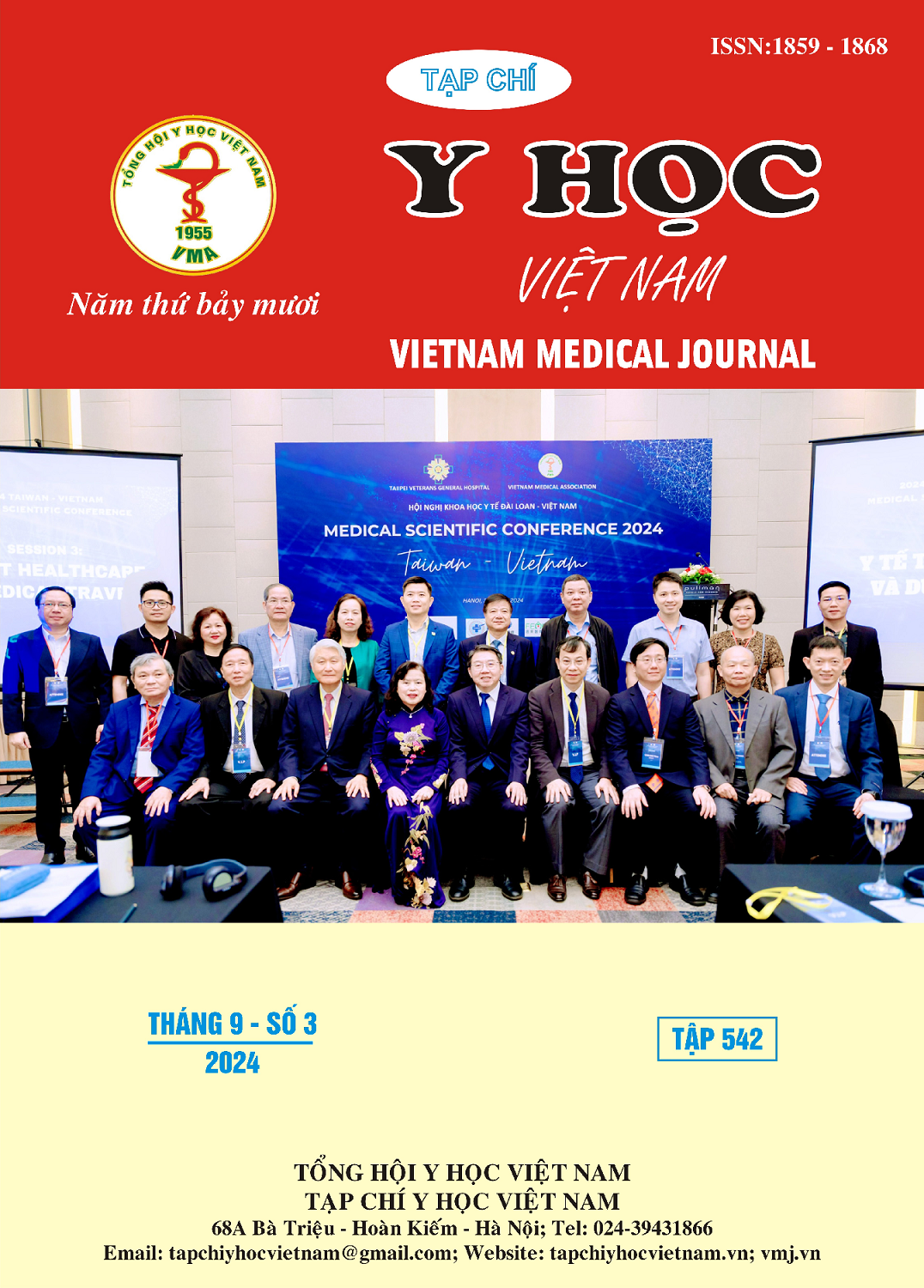SLEEP HYGIENE PRACTICES OF CESAREAN POSTPARTUM WOMEN DURING HOSPITALIZATION AND ITS ASSOCIATED FACTORS IN HANOI CITY
Main Article Content
Abstract
Purposes: 1) To describe sleep hygiene practices and 2) to identify its associated factors of cesarean postpartum women during hospitalization in Hanoi city's hospitals. Subjects and methods: a cross-sectional using a pre-designed questionnaire on 100 hospitalized cesarean postpartum women at VinMec Times City International General Hospital and Hanoi Central Obstetrics Hospital. Results: The sleep hygiene practices score (mean ± standard deviation) is 24.63 ± 9.22 (78-point scale). The domain "Sleep scheduling and timing" has the highest score of 9.67 ± 3.54, while the domain “Eating/drinking habits before sleep” has the lowest score of 1.86 ± 2.02. There was no statistically significant difference between demographics and sleep hygiene practices (p > 0.05). Conclusion: Our research found good sleep hygiene practices among post-cesarean section mothers in Hanoi during hospitalization. “Sleep scheduling and timing” was the weakest practice. Demographics’ differences did not affect sleep hygiene practices. These results highlight the necessity for education and support programs to improve sleep hygiene practices and overall health in post-cesarean section women.
Article Details
Keywords
sleep hygiene, postpartum, cesarean section, hospitalization
References
2. Baumgartel, K., & Facco, F. An Integrative Review of the Sleep Experiences of Mothers of Hospitalized Preterm Infants. Nursing for Women’s Health, 2018, 310–326. https://doi.org/ 10.1016/j.nwh.2018.05.003
3. Dhaliwal, S., Gehrman, P., Le, H.-N., Keller, J. M., & Sharkey, K. M. Sleep when the baby sleeps? The effect of daytime nap behaviors on postpartum depression severity: a stress buffering hypothesis. Sleep Research Society, 2023, A274–A275. https://doi.org/10.1093/sleep/ zsad077.0625
4. Doering, J. J. The physical and social environment of sleep in socioeconomically disadvantaged postpartum women. Journal of Obstetric, Gynecologic, and Neonatal Nursing: JOGNN, 2013, E33-43. https://doi.org/10.1111/ j.1552-6909.2012.01421.x
5. Hunter, L. P., Rychnovsky, J. D., & Yount, S. M. A Selective Review of Maternal Sleep Characteristics in the Postpartum Period. Journal of Obstetric, Gynecologic & Neonatal Nursing, 2009, 60–68. https://doi.org/10.1111/j.1552-6909.2008.00309.x
6. Tsai, S.-Y., Lee, C.-N., Wu, W.-W., & Landis, C. A. Sleep Hygiene and Sleep Quality of Third-Trimester Pregnant Women. Research in Nursing & Health, 2015, 57–65. https://doi.org/ 10.1002/nur.21705
7. Tzeng, Y.-L., Chen, S.-L., Chen, C.-F., Wang, F.-C., & Kuo, S.-Y. Sleep Trajectories of Women Undergoing Elective Cesarean Section: Effects on Body Weight and Psychological Well-Being. PLOS ONE, 2015, 10(6). https://doi.org/10.1371/ journal.pone.0129094
8. Yang, C.-M., Lin, S.-C., Hsu, S.-C., & Cheng, C.-P. Maladaptive Sleep Hygiene Practices in Good Sleepers and Patients with Insomnia. Journal of Health Psychology, 2010, 147–155. https://doi.org/10.1177/1359105309346342


